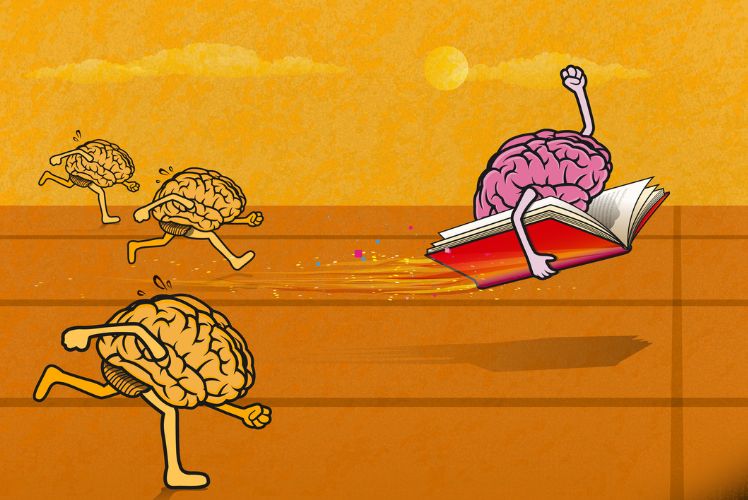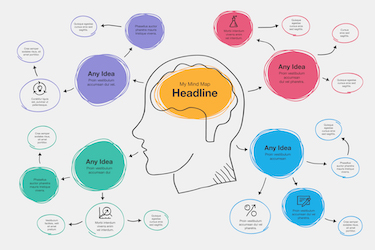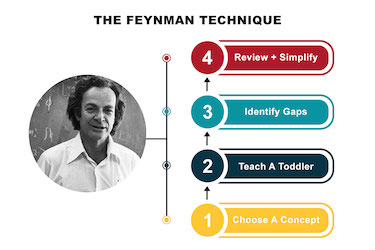Many of us wish we could absorb information from books and articles faster, especially when we are short on time. PhotoReading is a special reading method designed to help people process and understand large volumes of text more quickly than traditional reading. PhotoReading uses a set of techniques that can help us read at much faster speeds by directing information into the brain’s expanded processing abilities.
Unlike speed reading, where we move our eyes faster across the page, PhotoReading encourages us to view whole pages at a glance and use our subconscious to take in information. This method has gained attention from those who want to get through study material or work documents more efficiently, without missing key details. Some claim that it is possible to scan a page per second using these strategies, though results can vary from person to person.
If you are interested in exploring ways to read and learn more efficiently, PhotoReading provides a unique approach that is different from other popular reading techniques. For more information, visit this PhotoReading overview.
Key Takeaways
- PhotoReading is a technique for reading and processing information quickly.
- It uses methods that focus on whole pages and subconscious learning.
- Results and experiences can differ for each person.
What Is Photoreading?
Photoreading claims to let us process written material much faster than traditional reading methods. The approach is structured, uses the whole mind, and focuses on extracting key information efficiently.
Origins and Development
Photoreading was developed by Paul Scheele in the late 1980s. Scheele, co-founder of Learning Strategies Corporation, introduced the concept of "mentally photographing" pages for rapid data intake. He designed the system to help students, professionals, and anyone looking to absorb information quickly.
The idea behind photoreading came from combining psychology, speed reading, and modern learning science. Scheele's book and training programmes popularised the method worldwide. The technique grew in popularity as digital resources and self-improvement courses became more common.
Research from NASA noted claims that photoreading allows reading rates of up to 25,000 words per minute. The method has gained attention both for its bold promises and for ongoing debates about its effectiveness.
How Photoreading Differs from Traditional Speed Reading
Photoreading stands apart from classic speed reading in several ways. Traditional speed reading techniques focus on increasing eye movement and minimising vocalisation to read faster. The goal is to scan text quickly without losing comprehension.
In contrast, photoreading claims we can take in entire pages visually in seconds, using peripheral vision and subconscious processing. Instead of reading line by line, the method encourages us to "photo read" by flipping through pages quickly while relaxed but alert.
Supporters argue that photoreading lets us process information more deeply, while speed reading relies on consciously forcing faster intake. Photoreading also adds structured steps like previewing material and activating key ideas, which go beyond standard speed reading routines. See more details on differences at Steve Pavlina's review of Photoreading.
Key Principles of the Photoreading Whole Mind System
The Photoreading Whole Mind System uses a set of steps:
- Prepare: Set our purpose and relax our mind.
- Preview: Skim and scan for structure and main ideas.
- Photoread: Move quickly through the material, letting our eyes sweep the pages without pausing on words.
- Postview: Review the text to highlight important sections.
- Activate: Use recall, questions, and summarisation to bring out useful information.
The method suggests we use both our conscious and subconscious minds to absorb and retain new knowledge. Techniques such as relaxed alertness and "blipping" through pages are designed to make the process easier and faster than conventional methods. Learning Strategies, the company behind the approach, provides resources and training to support us as we build these skills. More information is available at the Learning Strategies photoreading site.
How Photoreading Works
Photoreading is a reading method that uses specific steps and mental techniques to help us process written material efficiently. This approach involves both our conscious and other-than-conscious minds, relying on our ability to stay relaxed and use peripheral vision for better comprehension.
The Photoreading Process
Photoreading is built around a five-step process:
- Prepare – We get into a calm, focused state.
- Preview – We quickly scan to understand the layout and main ideas.
- Photoread – Using soft focus, we let our eyes move down the page, taking in information rapidly.
- Postview – We skim for key ideas and note what stands out.
- Activate – We read more deeply to clarify and use what we have learnt.
During photoreading, we do not read word for word. Instead, we move our eyes smoothly and quickly, trusting that our other-than-conscious mind will store the information for later use. This method claims to improve speed without lowering comprehension, though people usually need practice and follow-up steps for best results. More details on the step-by-step process can be found on the Learning Strategies photoreading guide.
Role of the Conscious and Other-Than-Conscious Mind
Photoreading treats our minds as having two main parts: the conscious mind, which is aware and active, and the other-than-conscious mind, which handles information in the background. When we photoread, we focus less on trying to understand every word right away.
Instead, we allow our other-than-conscious mind to take in large amounts of text quickly. Later, our conscious mind can retrieve and use this stored information during the activation step.
Supporters of photoreading say that this process creates a layer of understanding that is not instantly obvious. We strengthen this knowledge through later review and use, which can lead to deeper comprehension over time. This idea is discussed further on LifeTools’ site.
Using Peripheral Vision and the Relaxed State
Photoreading requires us to stay in a relaxed state, with a calm mind and body. This relaxed state helps reduce mental blocks and allows us to absorb information more freely.
We also use our peripheral vision by looking at a page in a soft, unfocused way, rather than trying to read each word with sharp focus. By spreading our gaze, we take in the structure and visual layout of the material, giving our other-than-conscious mind more to work with than just the words themselves.
This technique is unique because it blends relaxation and broad focus to encourage learning. Studies and reports on photoreading, including on YouTube, explain how peripheral vision and relaxed attention help with speed and comprehension.
Core Techniques and Tools
Photoreading works best when we use specific methods that sharpen our focus, improve memory, and help us get the most from what we read. By combining mental mapping, deep focus, and structured reviewing, we can understand content faster and recall details more easily.
Mind Mapping for Enhanced Recall
Mind mapping is a visual tool that helps us organise information from books and articles. We start by writing the main topic in the centre of a blank page. From there, we draw branches for key ideas, adding sub-branches for details or examples.
Using mind maps allows us to break down complex content, making it easier to spot patterns and remember facts. Drawing connections between ideas on the map can also highlight relationships we might miss with plain note-taking.
When we review our notes later, the map format can jog our memory faster than lists. This technique is especially helpful after photoreading, when we need to recall information quickly or prepare for exams or projects. Mind maps can be hand-drawn or created with simple software tools.
Concentration and the State of Flow
Concentration is central to effective photoreading. We prepare by finding a quiet spot, removing distractions, and taking a few deep breaths to calm our minds. This helps us enter a state often called "flow," where we are fully absorbed in reading.
In a flow state, our attention is heightened and we are less likely to miss important details. Staying focused during photoreading sessions means our minds can process information more rapidly and efficiently. It helps to set a time limit, such as 15–20 minutes, for focused review before taking a break.
We can also try gentle background music or noise-cancelling headphones if outside noise is a problem. Regular practice improves our ability to concentrate and enter the flow state faster.
Utilising Printed Materials
Printed materials are better for photoreading than digital screens. Physical books and papers make it easy to flip through pages quickly, mark trigger words, and use our hands to guide our eyes. Our research on photoreading techniques suggests that many people remember more when using printed text rather than digital displays.
A good reading environment includes a sturdy desk, good lighting, and space to spread out pages. We might also find it helpful to highlight or underline key information as we go. Keeping our materials organised and within reach makes the photoreading process smoother and more productive.
The RAP (Read, Actively Preview, Postview) Technique
The RAP technique stands for Read, Actively Preview, and Postview. It is a method designed to help us engage with materials before, during, and after photoreading.
- Read: We glance over the table of contents, chapter headings, and any summaries. This gives us a good sense of what we are about to read.
- Actively Preview: Here, we flip through the pages, looking for bold text, bullet points, diagrams, and other markers. This helps us identify what sections may need extra attention.
- Postview: After photoreading, we quickly check the main points we remember and review select sections for deeper understanding. This step reinforces learning and fills in any gaps.
The RAP method encourages us to stay engaged and to tweak our focus as needed during the reading process. By repeating these stages, we boost comprehension and make retention easier as suggested in guides on the PhotoReading system.
Applications and Benefits of Photoreading
Photoreading is used to process large amounts of information quickly and can be adapted to various learning and work environments. It can help us with both structured education and self-directed learning, while also supporting family reading habits.
Academic and Professional Uses
Photoreading gives us a way to read books, articles, and reports more quickly than traditional methods. In school or university, this can help us manage heavy reading lists and keep up with high volumes of written material. By skimming and capturing key information faster, we have more time for review and deeper study.
At work, photoreading allows us to process technical documents, meeting notes, or research papers with improved efficiency. This is useful for professionals who must stay current in their fields or need to prepare for meetings and presentations. By remembering key details more easily, we can save time that would have been spent rereading.
The whole mind system used in photoreading is also designed to help us retain information longer. This is a practical benefit when studying for exams or preparing large projects, because we do not need to constantly revisit the same materials.
Self-Study Courses and Education
For those of us who prefer self-directed learning or are taking an online course, photoreading reduces the time it takes to get through each lesson or chapter. We can use photoreading to review dense study materials or quickly scan new subjects before we dive deeper.
A photoreading self-study course usually teaches us to process books and documents at least three times faster than normal. We may also find that complex ideas become easier to understand, as the system encourages us to get the overall picture before focusing on details.
This approach can be especially useful for people studying languages, technical manuals, or non-fiction topics. The technique helps us manage our time more efficiently and gives us the confidence to tackle larger volumes of reading materials.
Photoreading for Family and Children
Photoreading is not limited to adults or formal education. Families can use photoreading to create a more positive reading environment at home. By introducing these techniques, parents can encourage children to enjoy books, complete school assignments, and build confidence as readers.
Children may benefit from photoreading by gaining new skills in scanning and understanding information quickly. This approach supports them as they move through topics at school or prepare reports and projects.
Practising photoreading as a family can also make reading a shared activity. We can set aside time to review books or educational material together, making learning more interactive and less stressful. More information on how these techniques help families and children is available in frequently asked questions on photoreading.
Related Concepts and Misconceptions
Understanding photoreading requires us to separate facts from myths. We also need to look at how it stands apart from regular reading methods and address some of the unusual ideas sometimes linked to the technique.
Photoreading vs Regular Reading
Photoreading is often confused with speed reading or traditional ways of reading. In regular reading, we move through text word by word, understanding sentences as we go.
Photoreading, on the other hand, involves quickly scanning pages to capture the main ideas. Proponents say we use our brain’s natural abilities to process information much faster, sometimes claimed to be up to 25,000 words per minute.
It is important to know that photoreading is not just reading faster. It is a multi-step method that includes preparing the mind, previewing the material, photoreading, activating, and reviewing. Unlike skimming, which may miss important points, photoreading claims to let us gain the overall structure more efficiently.
Common Myths and the Mystery of Photoreading
Many people see photoreading as almost magical or mysterious because of the bold claims about reading speeds. Some believe that anyone can instantly absorb entire books with no effort. This leads to misunderstandings about what the technique actually does.
A chart to break down some common myths:
| Myth | Fact |
|---|---|
| You instantly memorise every word | Photoreading focuses on grasping main ideas, not memorisation of every detail |
| It is just speed reading | Photoreading is a unique process, not simply a faster way of traditional reading |
| No effort is needed | Learning and reviewing steps are still part of full understanding and recall |
Photoreading is not a shortcut to total knowledge. We must still spend time understanding and using the information for it to be effective.
Chi and Psychometry Connections
Photoreading has sometimes been linked with concepts like chi (life energy) and psychometry (gaining information just by touching objects). Some early ideas about "mentally photographing" texts suggested a supernatural aspect. For example, claims about using special energy or psychic ability to instantly absorb information add to the mystery and confusion about photoreading.
However, there is no scientific proof that chi or psychometry plays a role in photoreading. The technique relies more on mental preparation, focus, and practice than on unknown forces. While these mystical connections may interest some, we should approach them with scepticism unless supported by clear evidence.
Photoreading in Popular Culture
Photoreading has gained attention for both its bold claims and its unique approach to reading. We often see its themes and techniques appear in dramatic media, music, and even discussions about law.
Influence in Drama and Television
Television dramas have occasionally drawn on photoreading as a plot device. Scriptwriters use the idea of rapidly absorbing information to enhance characters with unusual abilities. For example, a detective might use a fast-reading method to crack complex cases, giving scenes a sense of urgency.
Some science fiction programmes portray photoreading as part of advanced human or AI development. This sometimes raises questions about the possibility of photographic memory or near-superhuman comprehension. While these portrayals often exaggerate, they create engaging moments and spark viewer curiosity.
In most cases, shows use photoreading more for dramatic effect than for educational accuracy. This helps keep viewers interested and gives characters unique skills that stand out from the norm.
References in Pop, Soul, and Literature
Photoreading has inspired discussions in pop and soul music scenes, especially as artists explore ideas of intelligence and personal growth. Lyrics and song concepts sometimes mention speed reading or mental sharpness, linking these abilities with creativity and inspiration.
In literature, we see references to photoreading in both fiction and non-fiction. Popular self-help books, for example, often mention the technique as a tool for improving learning speed. Some authors, such as Paul R. Scheele, have written entire books on the subject, explaining the process and its claimed benefits.
Modern novels might feature characters who claim to photoread, reflecting society’s fascination with quick learning and cognitive improvement. These references add depth to fictional personalities and connect with real-world trends in personal development.
The Case of Stephen King and Law Implications
Stephen King has not directly written about photoreading, but legal discussions sometimes mention him when exploring copyright and super-fast reading. Questions arise about whether someone photoreading one of King’s novels would violate copyright law if they publish a summary after a rapid scan.
Legal experts agree that speed does not change the rules of copyright. Reading a book quickly—whether by photoreading or skimming—does not grant permission to reproduce, sell, or distribute its content. The legal status of photoreading remains the same as for other reading techniques.
Court cases involving new reading methods sometimes use works by well-known authors like Stephen King as examples. These discussions help clarify the boundaries between personal use and copyright infringement, especially with emerging reading technologies.
Frequently Asked Questions
We often get questions about the best ways to learn PhotoReading, find resources, and understand its main techniques. Let’s provide clear answers based on reliable information.
How can I learn PhotoReading online for free?
There are free articles and forums that explain the basics of PhotoReading. While official courses usually cost money, we can use online FAQ pages or blog posts to learn the steps. Watching free video tutorials on platforms like YouTube may also help us get started.
Where can I find a comprehensive PDF guide on PhotoReading?
It is not easy to find a complete PDF guide legally for free, as most detailed manuals are sold by publishers. We can, however, find short guides, summaries, or sample chapters offered on some official websites. We need to be cautious about downloading copyrighted material from unverified sources.
What are the core techniques involved in PhotoReading?
PhotoReading uses several steps: previewing, activating questions, photoreading the material, postviewing, and rapid reading. A common method includes letting our eyes scan pages quickly to create a mental image, then using recall techniques to access this information later. Many also practise previewing, skimming, and clustering to improve retention.
Can anyone enrol in a PhotoReading course, and what are the prerequisites?
Anyone who is willing to learn can join a PhotoReading course. There are no strict prerequisites apart from a basic ability to read. According to PhotoReading FAQs, these methods are designed to be accessible to most people.
Is there evidence to support the effectiveness of the PhotoReading Whole Mind System?
Some people report positive results and increased reading speed after completing the PhotoReading programme. However, there is limited peer-reviewed scientific evidence supporting its effectiveness. Most claims come from user testimonials or independent reviews.
How does PhotoReading differ from traditional speed reading methods?
PhotoReading aims to use the whole mind by quickly scanning pages and relying on subconscious recall, while traditional speed reading focuses on conscious rapid reading and skimming. Standard speed reading also teaches techniques like chunking words and reducing subvocalisation, which differ from the visualisation that PhotoReading promotes. More details about differences can be found in online PhotoReading walkthroughs.





















